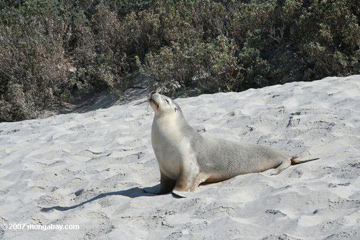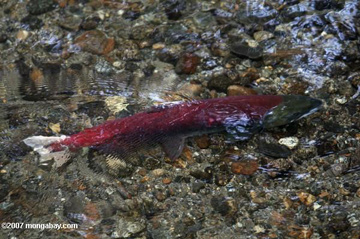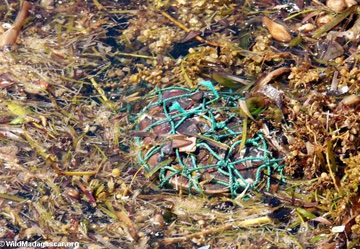New ‘red list’ seeks to stave off global seafood collapse
New ‘red list’ seeks to stave off global seafood collapse
Jeremy Hance, mongabay.com
March 3, 2008
|
|
Over-fishing and destructive fishing practices have had a considerable effect on oceanic ecosystems. In 2006 a highly-reported study found that without drastic measures all wild seafood will disappear from the oceans in 50 years. Greenpeace, working against such a crash, has started a campaign that highlights ‘red fish’. The twenty-two ‘red’ species are seafood that consumers and suppliers (including supermarkets) should avoid due to their plummeting populations and/or the damage caused by harvesting them.
Greenpeace uses five different gauges to establish their ‘red’ fish: 1) the status of the fish, whether they are threatened or endangered; 2) if destructive fishing methods are used, like bottom trawling, which harms the ecosystem; 3) if harvesting the fish has negative impact on non-target species through by-catch; 4) fish which are caught illegally by unregulated fishing operations, often called pirate fishing; 5) and if the fishery involved negatively impacts on local communities dependent on fishing. Phil Kline, an oceans campaigner for Greenpeace, stated that the species had to have low-marks in just one area to avoid the list; he added that “the list could be a whole lot longer, however we think it’s important to try and address the worst of the worst first.”
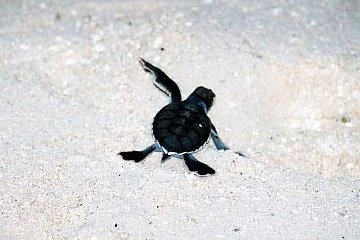
|
In an interview with Mongabay.com Kline said that the fish most threatened by population collapse are the Atlantic Halibut, the Monkfish, all sharks, and the Blue Fin Tuna, which he described as “the poster child for stock depletion”. Most of the depletion of shark population is due to the finning trade, where sharks have the fins caught off while the rest of the body is thrown back into the sea. The fins are used in an extremely popular and expensive Chinese delicacy called shark-fin soup. Sharks as by-catch is adding even more pressure on the populations. Kline stated that since sharks have long gestation periods and produce few young they are particularly vulnerable.
The Hoki, Atlantic Sea Scallops, Orange Roughy, and the Alaskan Pollock made the list due to destructive fishing practices, including by-catch and bottom-trawling. By-catch means the fish, mammals, reptiles, and birds that are caught by fisheries in pursuit of target species. Bottom-trawling and other practices greatly damage the environment. Fishing the Hoki, or Blue Grenadier, comes with a high yield of fur seals as by-catch, including the endangered southern fur seal. Orange Roughy stocks are highly depleted (it is on the Endangered Species list in Australia) and bottom trawling is the only way to catch the fish.
Populations of Atlantic Sea Scallop are abundant, but catching them destroys habitat; “it actually cuts into the very first inches of sea floor,” Kline says. Additionally the Atlantic Sea Scallop fishery impacts the population of Loggerhead Sea Turtles (already listed as endangered by the IUCN) during their annual migration. Kline says that the recorded by-catch is “close to 860 Loggerhead Sea Turtles in a year, although we are pretty sure that’s an underestimation.” He adds that many by-catches go unrecorded. Since they only happen during the turtles’ migration Kline says that the problem would be “easy to change”—simply don’t allow Atlantic Sea Scallop fishing during the turtle’s migration.
The Alaskan Pollock industry proves just as problematic. Comprising the world’s largest fishery, the pursuit of this fish causes tremendous amounts of by-catch in species across the ecosystem. Last year “160,000 King Salmon were caught as by-catch,” Kline says, “30,000 of these were King Salmon that didn’t go back up the Yukon river.” The King Salmon of the Yukon River are a source of food for native populations, who closed their fishing on the river due to lack of fish. “No-where in management plans do we budget for marine mammals, birds and other fish that are killed as by-catch” says Kline and the Alaskan Pollock fisheries has already caused “catastrophic declines of animals”, including the Northern Fur Seal, which is classified as endangered.
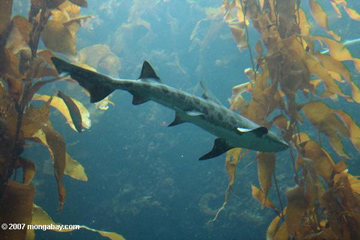
|
In its current campaign Greenpeace is aggressively pursuing supermarkets to stop carrying these ‘red species’. Their website states: “The public shouldn’t have to bear the burden of checking seafood red and green lists. Instead, we will start at the source. Supermarkets need to remove the worst fish from their counters.” Considering the devastating impact industrial fishing on the ocean, Mongabay.com asked Phil Kline if we had reached a point where seafood should be avoided altogether by consumers. “It’s not a position that the organization has put out,” he said, “but it is between you, and me, and people who are educated on this issue a very reasonable position to have. It is certainly a fool’s mission to encourage eating more seafood.” He added that “there are some fisheries in some areas that are very well managed, I can see no reason to tell people not to eat fish from those fisheries, and there are communities that depend on their small-scale fishing industry.” Kline has a rare perspective on the fishing industry, since for thirty years he was a commercial fisherman. He says that “watching us deplete the oceans turned me from a fisherman to an advocate for the fish”.
In addition to the red list and providing pressure on the food industry, Greenpeace also advocates making 40% of the world’s oceans no-take zones, allowing fish populations to recover and become sustainable for the future. The current no-take zones comprise less than 1% of the ocean.
Twenty-two species have been listed by Greenpeace as ‘red species’: suppliers and consumers should avoid these due to their detrimental effects on the oceans:
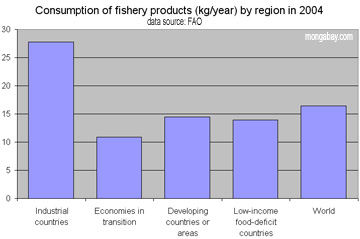
|
Alaska Pollock
Atlantic Cod or Scrod
Atlantic Halibut (US and Canadian)
Atlantic Salmon (wild and farmed)
Atlantic Sea Scallop
Bluefin tuna
Big Eye Tuna
Chilean Sea Bass (also sold as Patagonia Toothfish)
Greenland Halibut (also sold as Black halibut, Atlantic turbot or Arrowhead flounder)
Grouper (imported to the U.S.)
Hoki (also known as Blue Grenadier)
Monkfish
Ocean Quahog
Orange Roughy
Red Snapper
Redfish (also sold as Ocean Perch)
Sharks
Skates and Rays
South Atlantic Albacore Tuna
Swordfish
Tropical Shrimp (wild and farmed)
Yellowfin Tuna
